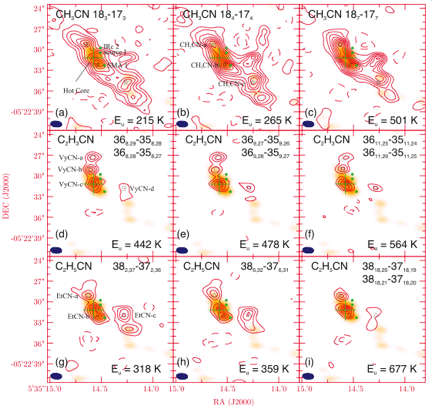2008 Annual Science Report
 NASA Goddard Space Flight Center
Reporting | JUL 2007 – JUN 2008
NASA Goddard Space Flight Center
Reporting | JUL 2007 – JUN 2008
Chemical Models of Nebular Processes
Project Summary
The goal of this task is to determine the chemical composition of icy bodies and establish their potential for delivering pre-biotic organic materials and water to the young Earth and other planets. This is being performed through detailed chemical modeling, coupled with physical evolution, of the interstellar precursor material and of the protosolar nebula. Related observational and laboratory studies are also being undertaken.
Project Progress
A key question in assessing the origin and evolution of organics in Planetary Systems is the relation between primitive solar system materials and those in interstellar dense clouds. Isotopomers provide important tests of processes and models. Comets and primitive solar system materials, such as meteorites and interplanetary dust particles (IDPs), display 15N/14N isotopic fractionation ratios that are enhanced relative to terrestrial values and the local ISM. We have explored how these could arise through ion-molecule chemistry, either in the outer regions of nebula or in the presolar dense core.
In a presolar dense core, the prestellar clump that eventually formed the protosun evolves into a ‘depletion core’ and the molecular 15N/14N ratios are enriched in a shell where there is selective CO/N2 depletion. In this case, we have shown that very large 15NH3/14NH3 ratios can occur in the grain mantles, and that these can exceed those found in meteorites and IDPs (Rodgers & Charnley 2008a). In this scenario, the fractionated ammonia must undergo a subsequent episode of processing to incorporate the enhanced 15NH3/14NH3 ratios into some organic macromolecular material, destruction of which was presumed to be the origin of high C15N/C14N ratios (and HNC) observed in many comets (Lis et al. 2008).
However, recent observations of the outburst of comet 17P/Holmes have allowed the HC15N/HC14N ratio to be measured. These measurements, and a re-examination of the HC15N/HC14N ratio derived for comet Hale-Bopp, indicate that HCN may carry all the 15N enrichment. We have explored this possibility in our model and find that large HC15N/HC14N ratios can occur early in the selective depletion process and be frozen out (Rodgers & Charnley 2008b). It appears that interstellar chemistry can indeed account for the observed cometary fractionation, as well as the high value found for 15N/14N in both amine and nitrile functional groups in primitive materials.
Two articles reviewing the connection between interstellar and cometary chemistries have been completed (Charnley & Rodgers 2008a,b). We have also continued observational programs designed to explore this connection:
- Preliminary Submillimeter Array maps of the distributions of organic molecules in the Orion-KL cloud (see Figures 1 &2), as well as models for their grain-surface formation, were presented at the BioAstronomy 2007 meeting in Puerto Rico (Wang et al. 2008; Charnley & Rodgers 2008c). An outline for a proposed search for interstellar pyruvic acid was also presented (Kisiel et al. 2008).
- Upper limits on the HNC/HCN ratio in the fragmenting comet 73P/Schwassmann-Wachmann 3 have provided insight into the possible nature and chemistry of the complex macromolecular material present in comets (Lis et al. 2008). With our collaborators at ASIAA (group of Prof. Y-J. Kuan), we recently participated in radio observations of comets 17P/Holmes (November 2007) and C/2007 W1 (Boattini) (June 2008) at ARO and JCMT; these data are currently being analyzed. A summary of our earlier radio observations of comets was presented at the Astrobiology Science Conference in April 2008 (Charnley et al. 2008).
- Finally, we contributed to the scientific case for the Triple-F comet sample return mission (Kueppers et al. 2008), as proposed to the Cosmic Vision Program of the European Space Agency.


-
PROJECT INVESTIGATORS:
-
RELATED OBJECTIVES:
Objective 1.1
Models of formation and evolution of habitable planets
